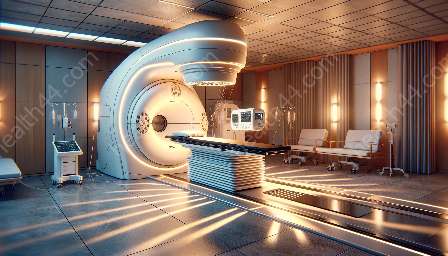Image-guided radiation therapy (IGRT) represents a significant advancement in the field of radiation oncology, offering precise and targeted treatment for cancer patients. This topic cluster aims to provide a comprehensive understanding of IGRT, its compatibility with radiation therapy machines, and its reliance on medical devices and equipment.
Understanding Image-Guided Radiation Therapy
IGRT involves using advanced imaging techniques to accurately target and localize cancerous tumors, allowing for highly precise delivery of radiation therapy. By integrating imaging technology with radiation treatment, IGRT offers improved tumor targeting and reduced radiation exposure to healthy surrounding tissues.
Key Components of IGRT
IGRT relies on various components to ensure accurate and effective treatment delivery. This includes sophisticated imaging modalities such as computed tomography (CT), magnetic resonance imaging (MRI), positron emission tomography (PET), and cone-beam computed tomography (CBCT). These imaging tools enable clinicians to visualize the tumor and surrounding structures in real time, facilitating precise treatment planning and delivery.
Additionally, IGRT systems are equipped with advanced software and hardware to integrate imaging data with the radiation therapy process. This integration ensures that the treatment is tailored to the unique anatomy and position of the tumor, even accounting for slight movements or changes in the patient's anatomy during the course of treatment.
Compatibility with Radiation Therapy Machines
IGRT is fully compatible with modern radiation therapy machines, including linear accelerators and brachytherapy devices. These machines are equipped with image-guidance capabilities, allowing for seamless integration of imaging data into the treatment process. The advanced software and hardware in these machines enable precise patient positioning and tumor targeting, ensuring that the radiation beams are delivered with unparalleled accuracy.
In addition to compatibility, IGRT enhances the overall efficiency of radiation therapy machines by minimizing uncertainties related to tumor movement and changes in anatomy. This results in more effective cancer treatment, improved patient outcomes, and reduced radiation-related side effects.
Role of Medical Devices and Equipment
Medical devices and equipment play a crucial role in supporting IGRT, providing the necessary tools for image acquisition, patient immobilization, and treatment delivery. For instance, specialized immobilization devices and positioning aids help maintain consistent patient positioning during imaging and treatment sessions, ensuring accurate and reproducible results.
Furthermore, collaborative efforts between medical device manufacturers and radiation therapy specialists have led to the development of dedicated IGRT systems and accessories. These include specialized imaging phantoms, motion management devices, and adaptive treatment solutions that are specifically designed to enhance the accuracy and precision of IGRT procedures.
Advancements and Future Implications
As technology continues to evolve, the field of IGRT is witnessing ongoing advancements aimed at further improving treatment outcomes and patient experience. Innovations in real-time image guidance, artificial intelligence (AI) algorithms for image analysis, and personalized treatment planning are shaping the future of IGRT and its integration with radiation therapy machines.
Looking ahead, the seamless integration of IGRT with emerging technologies such as proton therapy and non-invasive ablative therapies holds promise for delivering even more targeted and effective cancer treatments, ultimately improving survival rates and quality of life for patients.


